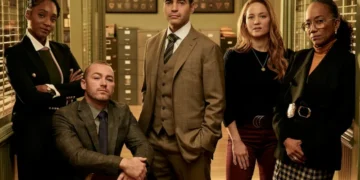The Hobbit’s average future is 100 years. Yet, in the movies we saw two lead hobbit characters, Bilbo Baggins and the Old Took, are portrayed as living to the age of 130 or more; however, Bilbo’s long life expectancy owes a lot to his ownership of the One Ring. Hobbits are considered to “grow up” on their 33rd birthday, so a 50 year aged hobbit would be viewed as arriving middle-age.
Most Hobbits carried on with longer life expectancies than an individual man, a race of which they may have been an off-shoot. The normal life expectancy of a Hobbit was around 100 years, however, it was not strange for a Hobbit to live upwards of three decades past that. The time at which a youthful Hobbit developed and was acknowledged as a grown-up was 33, contrasted with a Man’s 18 years. In this manner, a 50-year-old Hobbit would just be moderately aged. The most distinctive component of Hobbits was their short height. They were even littler than Dwarves and were normally somewhere in the range of two and four feet in stature. Moreover, the time goes on, Hobbits turned out to be significantly shorter gradually. It is noticed that by the Third Age, they were typically under three feet tall.
The second-most established hobbit character known as, Gerontius “The Old” Took, lived for a long time (more than 130 years), which was viewed as outstanding, that is the top finish of the hobbits’ age range. Later, he was just beaten by Bilbo Baggins, whom we know had more than 130 years of life expectancy with the additional assistance of the possession of one ring.
Another two major hobbit characters, Pippin and Merry, are aged 95 and 101 years old individually. They also portrayed so healthily in the movies and novels, and we can most likely believe this to be “decent life innings”. Otho and Lobelia Sackville-Baggins, two more hobbits, are even portrayed as more healthy and robust and both passed the age-line of 100 years.
Anything short of 80 was presumably viewed as an early passing, likely due to eating several morning meals throughout the years. Hobbits for the most part live around one hundred years, plus or minus a few decades. The most senior Hobbit on record (without assistance from a Ring of Power) was Bilbo’s grand-dad Gerontius Took, referred to by nearly everyone as the Old Took. He was 130 when he passed on. Bilbo just passed him before arriving at Valinor; he was 131 years old when he set sail, and we don’t have the foggiest idea how much longer he remain alive after that event.
Hobbits develop (go through adolescence, from birth to sexual development) substantially more gradually than humans naturally do. The age (go through adulthood, from sexual development to death) more gradually than normal human beings, however not at such a moderate rate as their youth would propose.
Exactly how long do hobbits live? It seems to show that their childhood closes, and apparently pubescence starts, at around age 20. The identical age in people in Western Europe at the hour of Tolkien was around 12 to 14 years, with the goal that youth for hobbits was around 50–60% longer than normal people.
Accordingly apparently, we found that,
- Hobbits arrive at sexual development and maturity stage at 20 years of age.
- The ladies keep up their fertility for, obviously, 40 years or more.
- Passing happens around 70 to 80 years after full growth and development.
Contrast this with people:
People arrive at sexual development at 12 to 14 years of age.
The ladies keep up their fertility for around 30 to 35 years.
Demise happens at age 70 or somewhere in the vicinity, around 55 to 60 years after development.
In light of this investigation, it reveals as though natural youth endures about half longer in hobbits than in people, the time of potential childbearing around 20–30% longer, and adulthood in general about 25% longer or thereabouts.
Subsequently, hobbits live longer lifespan than human but their age (maturity) is slower than people; however, this gradualness is to a great extent centered in youth.
Read More Interesting Article at lezeto Media






























































